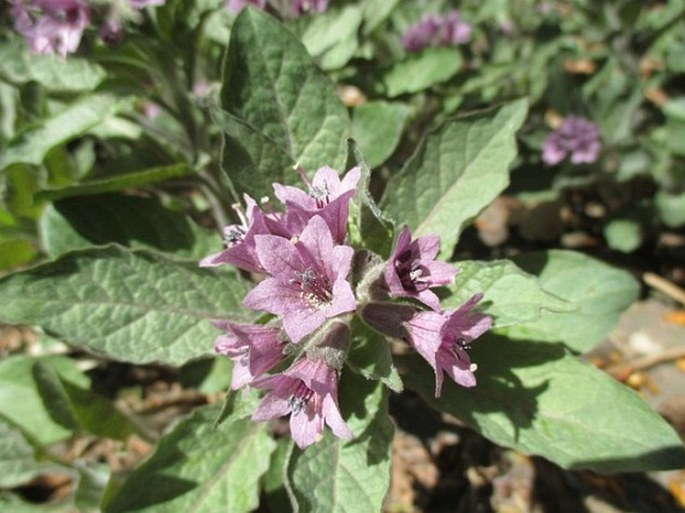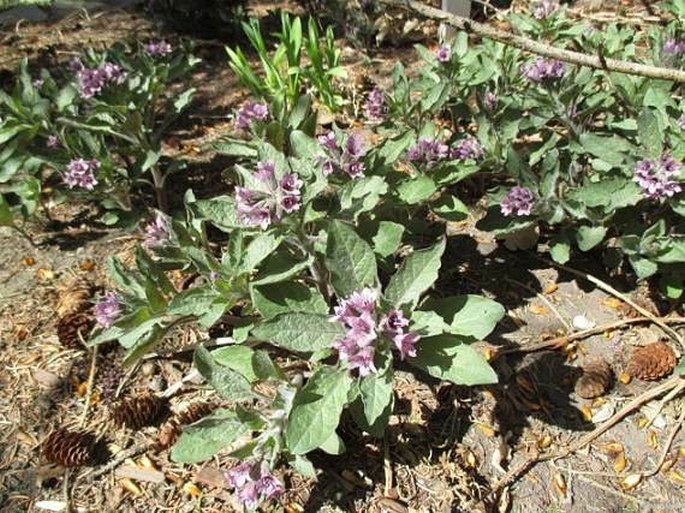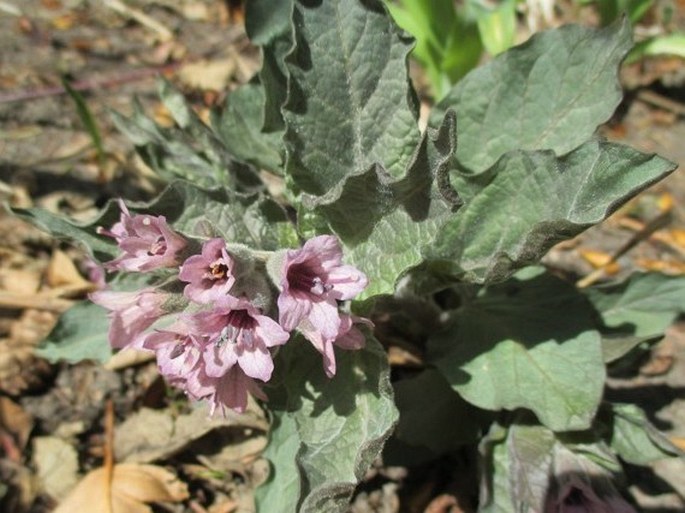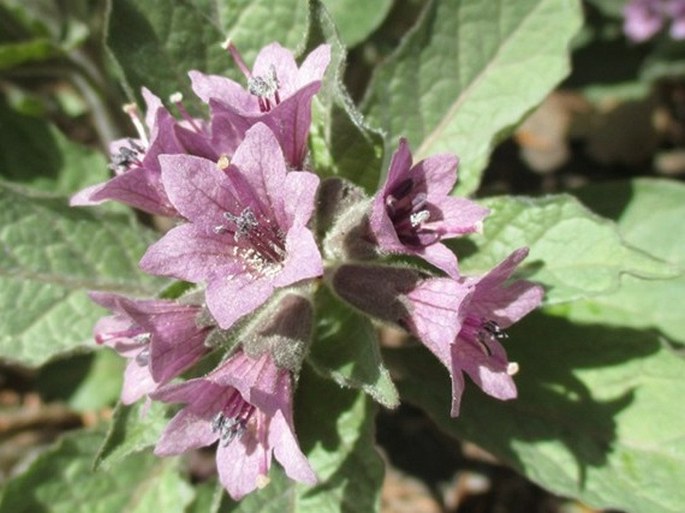Syn.: Hyoscyamus orientalis M. Bieb., Scopolia orientalis Dunal
Family: Solanaceae Juss.

Distribution: Found in the Greater Caucasus, Dagestan, Transcaucasus, northeastern Turkey and Central Asia.
Ecology: Rocky mountain slopes at elevations up to 2000 m. Blooms in April and May.
Description: Perennial herb, 40–60 cm tall, from a creeping rhizome about 1 cm thick. Leaves petiolate, elliptic to ovate, 8–11 × 4–5 cm, lower leaves cordate, margins smooth, wavy, dull dark green. Stems, petioles, under side of leaves, pedicels and calyx covered with fine glandular hairs. Inflorescence terminal, umbel-like, 5–9-flowered. Flowers trumpet-shaped, 2.5 cm long, calyx of fused sepals with 5 short lobes, purplish, petals fused into a tube, violet to lavender blue, 5 lobes spreading, 3 prominent, maroon veins each; filaments colour of veins, anthers greyish blue; style exserted; stigma with shallow split in the middle. Fruit is a spherical capsule, to 1 cm, yellow-spotted, within persistent and enlarged calyx.
Note: Close relative to Hyoscyamus and therefore, considered poisonous. Good ornamental plant for rockeries, where it thrives both in full sun and semi-shade.



These images were taken in Canada, Alberta, Calgary, Reader Rock Garden (April 2015).


